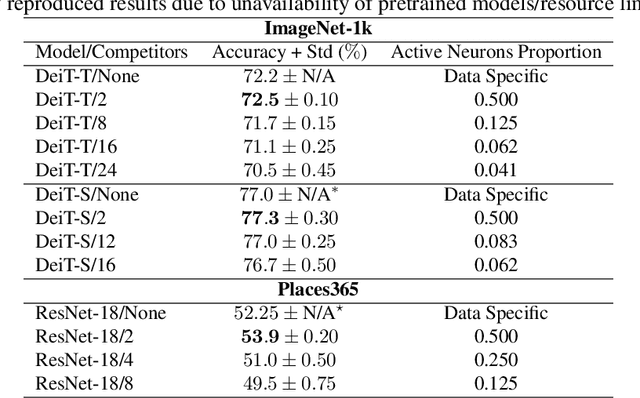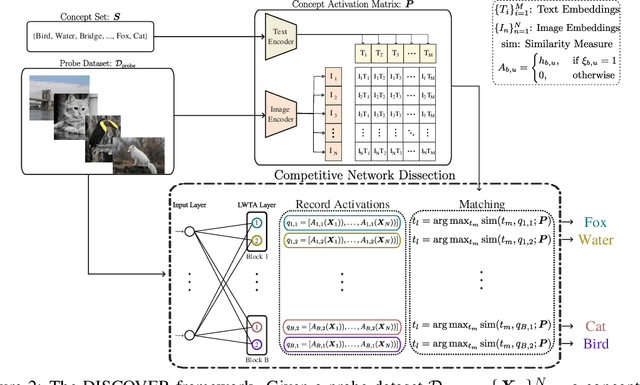DISCOVER: Making Vision Networks Interpretable via Competition and Dissection
Paper and Code
Oct 07, 2023



Modern deep networks are highly complex and their inferential outcome very hard to interpret. This is a serious obstacle to their transparent deployment in safety-critical or bias-aware applications. This work contributes to post-hoc interpretability, and specifically Network Dissection. Our goal is to present a framework that makes it easier to discover the individual functionality of each neuron in a network trained on a vision task; discovery is performed in terms of textual description generation. To achieve this objective, we leverage: (i) recent advances in multimodal vision-text models and (ii) network layers founded upon the novel concept of stochastic local competition between linear units. In this setting, only a small subset of layer neurons are activated for a given input, leading to extremely high activation sparsity (as low as only $\approx 4\%$). Crucially, our proposed method infers (sparse) neuron activation patterns that enables the neurons to activate/specialize to inputs with specific characteristics, diversifying their individual functionality. This capacity of our method supercharges the potential of dissection processes: human understandable descriptions are generated only for the very few active neurons, thus facilitating the direct investigation of the network's decision process. As we experimentally show, our approach: (i) yields Vision Networks that retain or improve classification performance, and (ii) realizes a principled framework for text-based description and examination of the generated neuronal representations.
 Add to Chrome
Add to Chrome Add to Firefox
Add to Firefox Add to Edge
Add to Edge